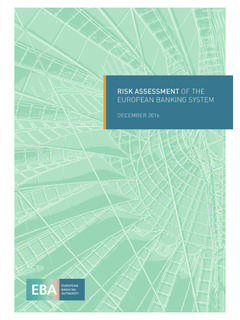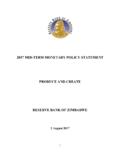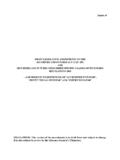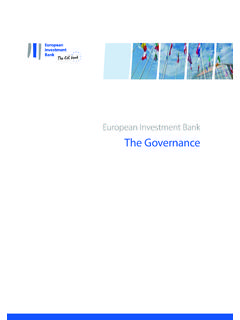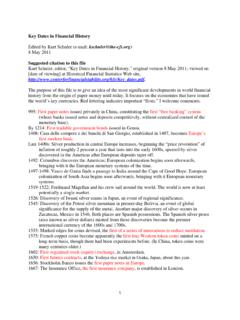Transcription of IMF Response to the Financial and Economic Crisis
1 EVALUATION REPORTIMF Response to the Financial and Economic Crisis 2014 International Monetary FundCover design: Steve Coleman, IMF Multimedia ServicesCataloging-in-Publication DataJoint Bank-Fund LibraryIMF Response to the Financial and Economic Crisis . Washington, : International Monetary Fund, ; cmAt head of title: IEO, Independent Evaluation Office of the International Monetary Fund. This report was prepared by an IEO team led by Ruben Lamdany and Sanjay Dhar. Includes bibliographical : 978-1-49830-517-41. Global Financial Crisis , 2008 2009. 2. Economic policy International cooperation. 3. International Monetary Fund.
2 I. Lamdany, Ruben, 1954 II. Dhar, Sanjay. III. International Monetary Fund. Independent Evaluation 2014 Publication orders may be placed online, by fax, or through the mail:International Monetary Fund, Publication Box 92780, Washington, DC 20090, : (202) 623-7430 Fax: (202) 623-7201E-mail: vAbbreviations viiExecutive Summary 11 Introduction 32 Coordination and Collaboration with Multilateral Entities 5A.
3 Supporting the G20 Process 5B. Working Within and With the FSB 6C. The IMF and the Vienna Initiative 7D. Working with the EC and the ECB 73 IMF Surveillance Following the Crisis 8A. Assessing IMF Macroeconomic Advice in the Crisis Aftermath 8B. Financial Sector Surveillance Following the Crisis 12C. Revamping the Approach to Assessing Risks and Vulnerabilities 144 Strengthening the Global Financial Safety Net 18A. Resource Mobilization: Strategy and Results 18B. Updating the Lending Toolkit 19C. Extending Financial Support to Member Countries 205 Conclusions and Recommendations 25A. Main Findings and Conclusions 25B.
4 Recommendations 27B oxes1. Advice to Initiate Fiscal Consolidation Stemmed from Concerns About Fiscal Solvency and Fiscal Crises 92. Varying Messages in IMF Discussion of Unconventional Monetary Policy and Tapering 163. IMF Learning from Crises in Asia and Latin America 21 ContentsCONTENTSivFigures1. Fiscal Policy Thrust 102. IMF Exercises to Address Risks and Vulnerabilities 153. Structural Conditionality in IMF Stand-By Arrangements, 1997 2000 Versus 2008 11 22 Annexes1. IMF-Centric Timeline of Events, August 2007 December 2013 292. IMF Downsizing During the Crisis 313. Abstracts of Background Papers 334.
5 Conclusions and Recommendations from Previous IEO Evaluations 35 References 37 STATEMENT BY THE MANAGING DIRECTOR, IEO Response , AND THE CHAIRMAN S SUMMING UPStatement by the Managing Director 41 IEO Response 45 The Chairman s Summing Up 46 BACKGROUND WORKThe following Background Papers are available on the IEO website at IMF Leadership and Coordination Roles in the Response to the Global Financial and Economic CrisisBP/14/07. IMF Macroeconomic Policy Advice in the Financial Crisis AftermathBP/14/08.
6 Aspects of IMF Financial Sector Surveillance During the CrisisBP/14/09. The IMF Response to the Global Crisis : Assessing Risks and Vulnerabilities in IMF SurveillanceBP/14/10. IMF Efforts to Increase the Resources Available to Support Member CountriesBP/14/11. The IMF s Lending Toolkit and the Global Financial CrisisBP/14/12. A Review of Crisis Management Programs Supported by IMF Stand-By Arrangements, 2008 11vThis report explores how the IMF performed during the Great Recession. It is the natu-ral follow up to the IEO evaluation of the IMF s surveillance during the run-up to the global Financial Crisis , which was published in 2011.
7 That evaluation concluded that the IMF had fallen short in delivering on its key objective of warning member countries about systemic risks and vulnerabilities. So how did the IMF respond once the Crisis took hold? This evaluation found many positive aspects. IMF-supported programs were timely and appropriately designed for the circumstances of the Crisis : Financial packages were large, disbursements were front-loaded, and conditionality was streamlined. This Response was enabled by a quadrupling of credit capacity albeit through borrowing rather than quota increases. The IMF also coor-dinated closely and effectively with other entities; but member countries wanted greater clarity on roles and accountabilities to safeguard the IMF s independence and help ensure uniform treatment across its IMF s call for coordinated fiscal stimulus in 2008 was timely and influential.
8 But the evaluation argues that the Fund s endorsement in 2010 12 of a shift to fiscal consolida-tion in some of the largest advanced economies was premature. And while the IMF appro-priately endorsed ultra-expansionary monetary policies, the ensuing policy mix of fiscal consolidation and monetary expansion was less than fully effective in promoting recovery and exacerbated adverse spillovers. Financial sector analysis was strengthened following the Crisis and the approach to diagnosing risks and vulnerabilities was substantially revamped, although the IMF was still unable to provide timely warnings of subsequent important systemic risks.
9 The report includes recommendations to enhance the IMF s ability to respond to future crises and to strengthen its ability to warn about mounting risks. It also calls on the Fund to remain a focal point of debate and discussion and continue to encourage an environment that is open to alternative Crisis has again reminded us of the need for an effective and well-equipped IMF. I hope this evaluation will contribute to this endeavor. Moises J. SchwartzDirectorIndependent Evaluation OfficeForewordviIMF Response to the Financial and Economic CrisisThis report was prepared by an IEO team led by Ruben Lamdany and Sanjay Dhar.
10 The IEO team included Louellen Stedman, Carlos de Resende, Shinji Takagi, Ling Hui Tan, and Alisa Abrams. The team was assisted by contributions from Luca Barbone, Thomas Bernes, Colin Bradford, Eduard Brau, Marek Dabrowski, Ross Levine, Francesco Luna, Thomas Reichmann, David Robinson, Marko kreb, Paulo Vieira da Cunha, and Nancy Wagner. The report benefited from comments from Jack Boorman, Jos Luis Escriv , Masahiro Kawai, Malcolm Knight, Rachel Lomax, Marcelo Selowsky, and Edwin Truman. The team is grateful to Franz Loyola, Tam Nguyen, and J r me Prieur for research assistance, and Rachel Weaving, Roxana Pedraglio, and Esha Ray for editorial and production management assistance.


